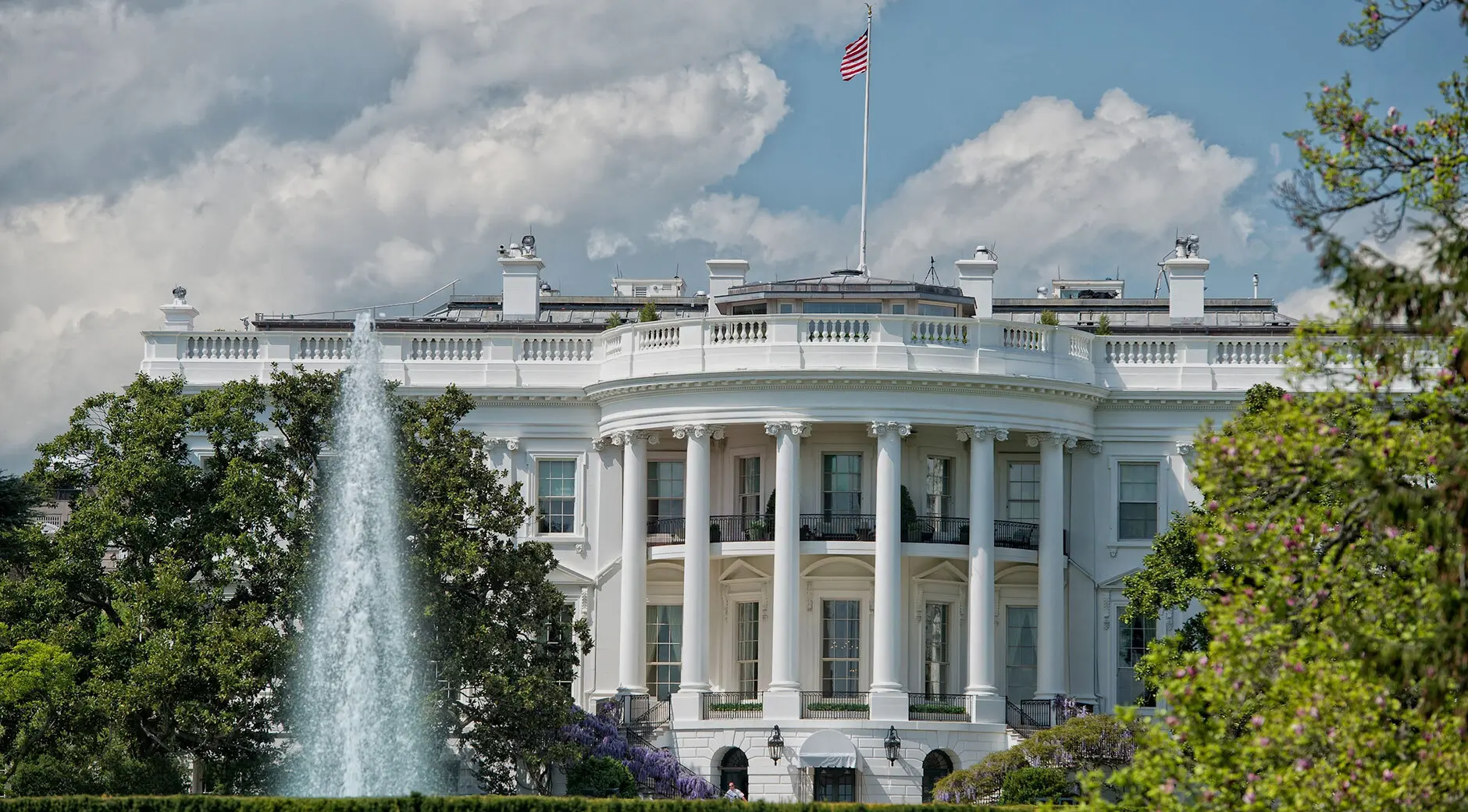
October 29, 2024
While the United States has made real progress to reduce the number of people in jail and prison over the last 15 years, we have more work to do to end mass incarceration and build safe, thriving communities. We all deserve safety, accountability, and justice. The next president and their administration should commit to these 10 actions—some immediate, others over the course of a first term. While this is by no means an exhaustive list of what the president can and should do, it highlights areas where meaningful, actionable change is within reach.
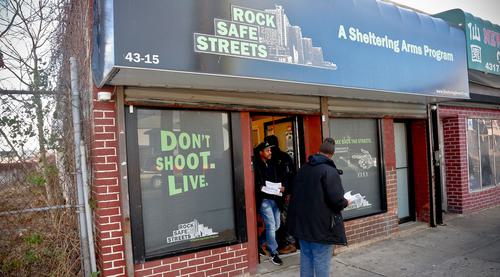
1. Build Permanent, Sustainable Funding Streams for Comprehensive Community Safety Strategies
More than 40,000 people in the United States die from gun violence every year. With an estimated 378 million guns in circulation in this country, the next administration needs a proactive strategy to reduce gun violence by building and strengthening public safety ecosystems beyond arrest, prosecution, and incarceration. A proactive strategy is vital to addressing the disproportionate toll gun violence takes on Black communities—young Black men are 21.6 times more likely to experience gun violence than young white men. In addition to investing in the things proven to make communities safe—jobs, quality education, healthcare, and housing—the next administration must continue to invest in community violence intervention (CVI) programs and strategies, which are among the most successful and cost-effective solutions to prevent community violence.
CVI programs and strategies are led by civilian experts—often called violence interrupters, life coaches, or credible messengers—who build relationships with people most at risk of participating in a shooting or being a victim of gun violence. States and cities across the country used more than $500 million from the American Rescue Plan Act (ARPA) and the Bipartisan Safer Communities Act (BSCA)—an unprecedented federal investment—to develop and expand these interventions. With the help of these and related strategies, cities like Detroit, Boston, St. Louis and Baltimore have seen massive reductions in homicides and shootings. The next administration should provide further funding at this level in order to scale CVI approaches and build comprehensive public safety ecosystems. This would represent a significant investment but still does not compare to annual spending on police, which totals $30 billion from the federal government and roughly $115 billion from states and localities.
- CVI Action Plan, Community Violence Intervention Action Plan: Mapping Transformation for The Field, Fall 2024 (New York: Ford Foundation, 2024).
- Giffords Center for Violence Intervention, “What Is Community Violence Intervention?”
- Office of Justice Programs, “Community Violence Intervention: A Collaborative Approach to Addressing Community Violence.”
- Shani Buggs, Community-Based Violence Interruption & Public Safety (Houston: Arnold Ventures, 2022).
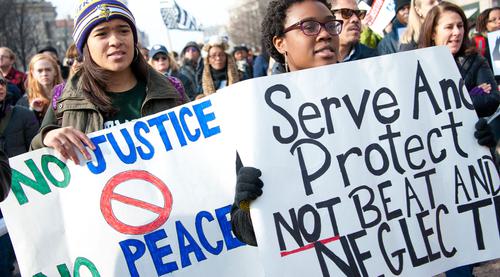
2. Recommit the Nation to Progress on Police Accountability
George Floyd, Breonna Taylor, Tony McDade, Tyre Nichols, Eric Garner, Sonya Massey, and so many others should be alive today. So far in 2024, more than 1,000 people have died at the hands of police officers who are meant to keep us safe. This reality is not shared equally: Black people are nearly three times more likely than white people to be killed by police. Across the country, people agree that we can support the police while holding them accountable when they break the law. While the United States appeared to be on the cusp of delivering systemic police reform in 2020, much of that progress has stalled, and reform remains long overdue.
The next president must make police accountability a top priority by working with Congress to ensure the passage of the George Floyd Justice in Policing Act (JPA). President Biden’s Executive Order on Advancing Effective, Accountable Policing was an interim step in actualizing the policies of the JPA, but legislation is needed to uphold these reforms as the minimum standard for law enforcement. The JPA is comprehensive legislation that would provide the framework for critical changes to address the deep-rooted issues of racial bias, excessive use of force, and lack of transparency within law enforcement agencies. It includes essential measures like banning chokeholds, limiting no-knock warrants, expanding the ability of jurisdictions to investigate unconstitutional policing patterns and practices, and, crucially, ending qualified immunity for law enforcement officers.
- Campaign Zero, “Mapping Police Violence.”
- Ray Sanchez, “Renewed Calls for Passage of George Floyd Justice in Policing Act After Fatal Shooting of Black Woman in Her Home,” CNN, July 25, 2024.
- Phillip Atiba Goff, et al., Re-imagining Public Safety: Prevent Harm and Lead with the Truth (New Haven and Denver: The Justice Collaboratory and Center for Policing Equity).
- Brennan Center, “What It’s Going to Take to Fix Policing,” September 16, 2020.
3. Expand Federal Clemency Efforts
One of the president’s clearest and most powerful criminal legal reform levers is the constitutional clemency authority to grant pardons and commutations for federal offenses. Since 1795, the president’s clemency power has been used to correct overly harsh punishments, provide reprieve, and heal our nation in times of crisis. The current process, however, is both cumbersome and convoluted, as the Department of Justice (DOJ) is responsible both for prosecuting cases and later reviewing them for clemency. This structure has led to inconsistent and limited use of this tool, especially over the past two administrations, despite its vast potential to counterbalance harsh sentencing practices and address racial disparities in the legal system. More than 9,300 petitions are pending—many of them more than five years old.
The next administration should begin expanding federal clemency efforts by commuting the sentences of people who remain on home confinement under the Coronavirus Aid, Relief, and Economic Security (CARES) Act. Out of the original roughly 13,000 people transferred from federal prisons as a lifesaving measure during the COVID-19 pandemic under the CARES Act, 1,626 remain on home confinement according to the Bureau of Prisons (BOP). So far, 99.8 percent of those released to home confinement have not been rearrested for new offenses, and the vast majority have successfully reintegrated into their communities. The DOJ promulgated a much-needed rule in 2023 allowing people placed in home confinement under the CARES Act to remain home for the duration of their sentences, but that does not go far enough. Clemency is the appropriate tool, as this group has already been thoroughly vetted and met strict eligibility criteria, and have further proven through good conduct that they can be released safely. The administration should also commit to making substantial changes to the clemency process to create more independent evaluations of petitions and recommendations and pave the way for more applications to be considered and granted. These are needed steps to reduce mass incarceration and provide second chances for people serving excessively long sentences.
- David Safavian and Timothy Head, “There’s No Reason to Send These 3,000 People in Home Confinement Back to Federal Prison,” The Hill, December 3, 2023.
- Kenny Lo, Betsy Pearl, and Akua Amaning, “Clemency 101: How Sentences Can Be Pardoned or Commuted,” Center for American Progress, May 1, 2020.
- Naila Awan and Katie Rose Quandt, Executive Inaction: States and the Federal Government Fail to Use Commutations as a Release Mechanism (Northampton, MA: Prison Policy Initiative, 2022).
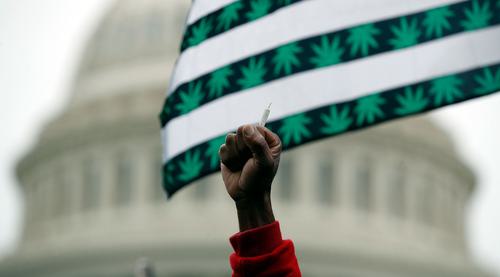
4. Fully Deschedule Cannabis
As public sentiment has evolved on legalizing cannabis—and possession of it is now fully or partially decriminalized in 31 states and territories—the next administration can take an important step toward updating the law to reflect the nation’s values and follow emerging evidence. Since 1971, cannabis has been classified as a Schedule I substance under the Controlled Substances Act (CSA). Schedule I substances, like heroin and LSD, are considered to have a high potential for abuse and no accepted medical use, and they carry the strictest legal penalties. This classification for cannabis, originally intended to be temporary, has contributed to the mass criminalization of people who use cannabis, particularly within Black and other communities of color. To this day, Black adults in the United States are still disproportionately likely to be arrested for cannabis-related offenses even though Black and white people use cannabis at comparable rates.
Although President Biden’s Drug Enforcement Agency (DEA) proposed a rule in May 2024 to reclassify cannabis from Schedule I to Schedule III under the CSA, the next administration should deschedule cannabis entirely. Rescheduling, still pending approval by the DEA, would recognize the medical use of cannabis but would not legalize it for recreational use. Rescheduling alone is not enough: without full descheduling, cannabis possession without a prescription would remain a federal crime. In addition, descheduling cannabis entirely would align federal law with the government’s own scientific conclusion that cannabis is less harmful than alcohol, which has never been scheduled under the CSA.
- Drug Policy Alliance, “To Decriminalize Marijuana It Must Be Descheduled. Rescheduling Is Not Enough.”
- Alex Malyshev and Sarah Ganley, “Update on the DEA’s Efforts to Reschedule Cannabis: What You Need to Know,” Reuters, September 11, 2024.
- Makada Henry-Nicke and John Hudak, It Is Time for a Cannabis Opportunity Agenda (Washington, DC: Brookings, 2020).
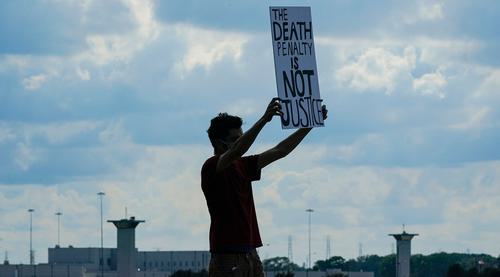
5. Work Towards Ending the Death Penalty
The death penalty is an inhumane policy choice that does not deter crime and is regularly applied in an unjust and racist manner—a reality that people in the United are recognizing in growing numbers. Since 1973, at least 200 people sentenced to death have been exonerated—nearly two-thirds of them people of color, including 108 Black people. Those convicted of killing white people are 17 times more likely to face the death penalty than those convicted of killing Black people. Black people make up just 13 percent of the U.S. population but account for 41 percent of those on state death rows and 38 percent of those on federal death row. The finality of the death penalty presents no recourse for mistakes made by the criminal legal system, as embodied by the recent tragic execution of Marcellus Williams in Missouri despite conclusive DNA evidence proving his innocence.
It is time to put an end to this deeply flawed and racially biased practice. The Biden administration issued a moratorium on federal executions after the Trump administration resumed executions in 2020 following a 17-year hiatus, killing 13 people in just six months—three times the total from the previous 60 years. The next administration should reaffirm the moratorium on federal executions immediately after taking office. Over the course of its term, the administration should also direct the DOJ to abandon capital punishment in future cases, commute the sentences of everyone on federal death row, and work with Congress to abolish the death penalty entirely.
- Adam Liptak, “A Vast Racial Gap in Death Penalty Cases, New Study Finds,” New York Times, August 3, 2020.
- Death Penalty Information Center, “Policy Issues: Race.”
- Ngozi Ndulue, Enduring Injustice: The Persistence of Racial Discrimination in the U.S. Death Penalty (Washington, DC: Death Penalty Information Center, 2020).

6. Reform the Nation’s Prisons
Our nation’s prisons are inherently brutal environments that are ill-suited for rehabilitation and fail to uphold basic principles of human dignity. Currently, nearly 2 million people—disproportionately Black and Latinx—are incarcerated in overcrowded, inhumane conditions. The vast majority of them will return to their communities, but the traumatic and cruel conditions of their imprisonment only serve to decrease the chances they will be able to successfully adjust to life outside of confinement. These degrading conditions are not limited to state prisons: Congress recently investigated the systemic abuse, corruption, and misconduct in the federal BOP, which led to the bipartisan passage of the Federal Prison Oversight Act. That bill created necessary independent oversight mechanisms, giving the DOJ’s inspector general the authority to conduct regular inspections of federal prisons.
The next administration should not wait for the inspector general and should instead take a proactive stance and initiate widespread reforms to improve conditions of confinement at BOP facilities. This includes providing high-quality gender-specific services and health care; training corrections professionals in restorative practices; increasing access to college education; guaranteeing the right to family and community connections; and more. Such practices align with life-changing, evidence-backed experiments in reform across the country that have been supported by DOJ grants as well as lessons learned from countries where human dignity is a protected right. These reforms will enable BOP to serve as a model and demonstrate that upholding human dignity while fostering humane and secure environments is not only possible but essential.
- Ryan Shanahan, Selma Djokovic, Lidia Vasquez, Restoring Promise: A Randomized Control Trial Examining the Impact of an Innovative Young Adult Housing on Reducing Violence (New York: Vera and MILPA, 2023).
- Restoring Promise, Restoring Promise Implementation Toolkit: Opening Housing Units for Young Adults Built on Human Dignity (New York: Vera Institute of Justice, 2024).
- Alliance for Safety and Justice, Crime Survivors Speak 2024: A National Survey of Victims’ Views on Safety and Justice (Alliance for Safety and Justice, 2024).
- Shon Hopwood, “How Atrocious Prisons Conditions Make Us All Less Safe,” Brennan Center for Justice, August 9, 2021.

7. Remove Barriers to Stable Housing for People Reentering Their Communities
At least 95 percent of incarcerated people eventually return to their communities, but for most, their reentry into society is undermined by barriers to finding housing—as well as healthcare, jobs, and more. Many formerly incarcerated people are unable to secure safe and affordable housing because housing providers often reject them despite evidence that a conviction history has no bearing on whether a person will be a good tenant. These exclusionary policies contribute to the stark reality that formerly incarcerated people are 10 times more likely to experience homelessness compared to the general population—a disparity wider for Black and Latinx people. In turn, people who are unhoused are 11 times more likely to be arrested than those with stable living conditions.
Most of the 3,300 public housing authorities in the United States, regulated by the federal Department of Housing and Urban Development (HUD), also maintain exclusionary policies, which deny formerly incarcerated people the opportunity to live in public housing. In early 2024, the Biden administration proposed new rules aimed at easing restrictions on publicly assisted housing for formerly incarcerated people. The next administration should expedite the finalization of the rule to ensure that people with conviction histories are not automatically denied HUD-subsidized housing (aside from the exclusions required by law). This will help stabilize communities across the country and help formerly incarcerated people reintegrate into their communities. Once the rule is finalized, HUD will then be able to exercise its wide-ranging policy, funding, and enforcement levers to ensure faithful and robust implementation.
- HUD Public Affairs, “HUD Outlines Its Action Plan to Remove Unnecessary Barriers to Housing for People with Criminal Records” (Washington, DC: HUD, April 23, 2023).
- Justin Dorazio, “Strengthening Access to Housing for People with Criminal Records Is Key to Successful Reentry,” Center for American Progress, April 17, 2023.
- Selena Muñoz-Jones and Emily Widra, “How Your Local Public Housing Authority Can Reduce Barriers for People with Criminal Records,” Prison Policy Initiative, February 15, 2023.
- Bureau of Justice Assistance and Vera Institute of Justice, Opening Doors, Returning Home: How Public Housing Authorities Across the Country Are Expanding Access for People with Conviction Histories (Washington, DC and New York: BJA and Vera Institute of Justice, 2022).
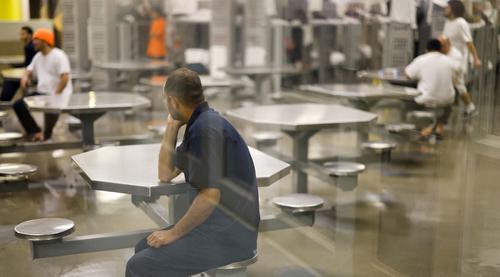
8. Close ICE Detention Facilities That Have Consistently Failed to Meet Appropriate Standards of Care
Immigration and Customs Enforcement (ICE) subjects hundreds of thousands of people each year to egregious suffering and deprivation of liberty at exorbitant cost to the U.S. taxpayer. The most recent budget included $3.4 billion towards expanding ICE detention, even though the government’s own data shows that detention neither deters migration nor is necessary to ensure court appearances—two claims frequently used to justify its expansion. The ICE detention system operates with little oversight and has an established track record for inadequate medical care resulting in preventable deaths, alarming and punitive use of solitary confinement, and obstruction of access to legal counsel. Additionally, ICE’s overwhelming reliance on private prison corporations creates perverse cost-cutting incentives and leads to substandard care, negligence, and life-threatening conditions.
While these injustices persist across the immigration detention system, six facilities are particularly inhumane and should be closed immediately: Abyon Farmville Detention Center, Adelanto Detention Facility, Eloy Detention Center, Moshannon Detention Facility, Torrance County Detention Facility, and Winn Correctional Center. Multiple congressional offices, as well as officials within the Biden administration, have called for the closure of these facilities, noting “horrific conditions” including contaminated drinking water, inadequate medical care, forced sleep deprivation, prolonged solitary confinement, limited access to legal representation, and violent retaliation against detained people who advocate for better treatment. Apart from the urgent humanitarian concerns these facilities’ continued operation presents, an ICE memo from August 2022 recommended the closure or significant reduction of nine facilities—including Adelanto, Farmville, and Torrance—due to cost inefficiencies and staffing shortages. Importantly, these closures should lead to a sustained reduction in detention nationwide rather than the replacement of this capacity elsewhere or an increase in electronic surveillance.
- American Immigration Lawyers Association, “Featured Issue: Immigration Detention and Alternatives to Detention,” September 9, 2024.
- Vera Institute of Justice, “ICE Detention Trends,” database (New York: Vera Institute of Justice, updated 2023).
- Nina Siulc and Noelle Smart, Evidence Shows that Most Immigrants Appear for Immigration Court Hearings (New York: Vera Institute of Justice, 2020).
- Aditi Shah and Eunice H. Cho, No Fighting Chance: ICE’s Denial of Access to Counsel in U.S. Immigration Detention Centers (New York: ACLU, 2022).
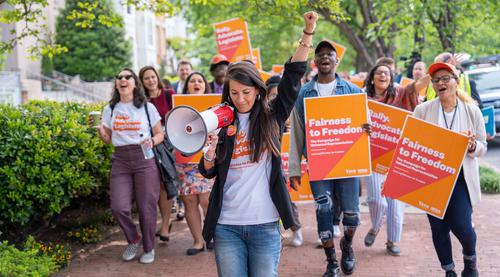
9. Ensure Federally Funded Lawyers for People Facing Deportation
Unlike in the criminal legal system, there is no guaranteed right to a public defender for people facing detention and deportation in immigration court. The vast majority of immigrants—around 68 percent of pending deportation cases—are left to navigate this extremely complex process alone against highly trained government lawyers. By enabling more community members to remain at home, on the job, and with their families, legal representation for immigrants makes the country safer for everyone, promotes economic prosperity, and advances a more functional immigration system based on fairness and equity.
Although the federal government currently funds some immigration legal services, it has largely fallen to state and local governments. More than 55 jurisdictions—including 10 states—have implemented publicly-funded legal representation programs. But meeting the critical, nationwide need for legal representation requires greater federal action. The next president should include robust funding in their budget request to resource legal representation for indigent adults facing immigration court proceedings as a step to expand government-funded legal representation. This investment should be supplemented with a new grant program administered by the DOJ’s Office of Access to Justice to develop a legal services workforce scaled to better meet the representation needs of people facing deportation.
- Vera Institute of Justice, “Fairness to Freedom.”
- Vera Institute of Justice, Center for Popular Democracy, National Immigration Law Center, “Advancing Universal Representation: A Toolkit for Advocates, Organizers, Legal Service Providers, and Policymakers.”
- Vera Institute of Justice, Rising to the Moment: Advancing the National Movement for Universal Representation (New York: Vera Institute of Justice, 2020).
- Greg Chen and Jorge Loweree, The Biden Administration and Congress Must Guarantee Legal Representation for People Facing Removal (Washington, DC: American Immigration Council and American Immigration Lawyers Association, 2021).
10. Invest Heavily in Data and Science
To better measure what works to advance safety, accountability, and justice, we need accurate, timely data and evidence. And over the last several years—with the nationwide rise in crime rates in 2020 and subsequent decline—the public has grown invested in community safety data. Yet, the current data available on public safety and criminal legal systems is often inconsistently collected and reported, delayed in its publication, and inaccessible to the general public. Many police departments across the country, for example, fail to provide consistent, reliable data on key issues like who they arrest and how often they use force. The federal government's data on jail detention is also sparse. Currently, the Department of Justice’s (DOJ) principal statistical agency, the Bureau of Justice Statistics (BJS), collects data for all jails only once every five years, which does not provide policymakers sufficient insight into trends at the local and state level. Even more troubling: the federal government does not know how many people die in U.S. jails and prisons each year.
The BJS and the National Institute of Justice (NIJ) —the DOJ’s research and evaluation agency—remain severely underfunded, comprising less than 3 percent of the total amount dedicated to funding public safety and criminal justice grants under the Office of Justice Programs. Such limited funding for research restricts the federal government’s ability to provide the timely, detailed nationwide data that policymakers, researchers, and the public need to scale solutions for safety and hold our criminal legal systems accountable. The next administration should double federal investments in the BJS and NIJ to improve their capacity for collecting and publishing accurate, comprehensive data on policing, incarceration, and crime. Increasing funding for these agencies is an essential step towards building a data-driven foundation that will drive meaningful criminal legal reforms.
- Alaina Ruffin, “The Lack of Prison Data Harms Our Communities,” (Washington, DC: Leadership Conference on Human and Civil Rights, 2024).
- M. Forrest Behne, Craig Waleed, Meghan Peterson, and Lauren Brinkley-Rubinstein, “When It Comes to Reporting Deaths of Incarcerated People, Most States Break the Law,” The Appeal, March 2, 2022.
- Jacob Kang-Brown, Understanding National Crime Data: A Comparison of Data from the FBI and the National Crime Victimization Survey (New York: Vera Institute of Justice, 2022).
- Vera Institute of Justice, “Police Data Transparency Index,” database (New York: Vera Institute of Justice, updated October 16, 2023).


